5 ways you're encouraging mold in your home this season
Here's how you might be encouraging mold in your home — and how not to
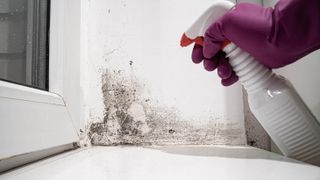
Nobody wants to deal with mold in their home, and if you do spot signs of growth, you'll need to know how to get rid of mold fast.
Essentially, mold spores are caused by excess moisture and humidity, especially in warm rooms, such as bathrooms and kitchens. If left untreated, these small black spots can spread and do some serious damage to your home, not to mention your health.
But, in our best efforts to keep warm, cozy and energy-efficient for winter, did you know that you could actually be encouraging mold in your home?
Winterizing our homes by sealing windows and cracks or using furnaces, can unintentionally cause excess condensation, leading to mold growth. In addition, there may be issues in and around our property like leaky pipes that can cause moisture build-up if not seen to. In fact, winter is the time when the chances of mold growth in your home is highest.
That’s why it’s so important to prevent mold in your home by inspecting your property, and taking the right measures to ‘mold-proof’ your home in the colder months. So, before you make your home toasty, check out these ways you might be encouraging mold in your home this season, and how to avoid the pitfalls.
If you don’t have one of the best dehumidifiers, you could always try one of these 5 houseplants that will help to prevent mold. Plus, avoid these 5 mistakes you’re making when removing mold.
1. Blocking out ventilation
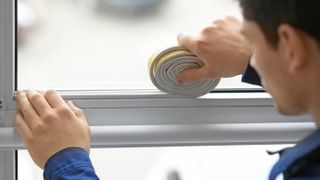
When preparing our homes for winter, we tend to seal off everything to keep the heat in, and save on our energy bills. From air vents and fans to window insulation, these can all work well to prevent the heat escaping and cold air in. However, this can also block essential ventilation needed to prevent condensation building up.
Sign up to get the BEST of Tom's Guide direct to your inbox.
Here at Tom’s Guide our expert editors are committed to bringing you the best news, reviews and guides to help you stay informed and ahead of the curve!
This stagnant air can lead to condensation inside your windows, doors or any other surface which could lead to mildew and mold growth. Despite the chill factor, it’s always recommended to open the doors and windows a couple of times a week to let in some fresh air, and prevent a build-up of moisture.
Bear in mind, if the condensation is an ongoing problem, you might need to look at replacing your windows or seek professional advice.
2. Not using exhaust fans
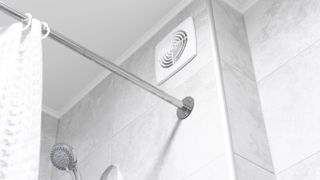
Another mistake we often make is to not make use of our exhaust fans around the home. These are vital in speeding up the venting process, especially in humid rooms such as the bathroom, or if you’d rather not open a window in colder temperatures.
These exhaust fans are designed to pump out excess moisture and odors from your home, helping to prevent mold growth. They’re often installed around particularly humid areas, such as in the bathroom, kitchen or basement, and can help when you’re lacking the elements.
Ensure the room is well-ventilated to the outdoors once you’ve finished taking a hot bath or shower. Also, if you’re cooking up a storm in the kitchen and releasing a lot of steam from your oven, pots or pans, switch on the exhaust fan immediately. Just avoid leaving them running for longer than needed as these can consume a lot of energy over time.
3. Ignoring a leak

Whether it’s a dripping bathroom faucet or you’ve noticed signs of water damage around the property, leaks should never be ignored. Any plumbing issues could lead to excess moisture and damp build-up in the home, leading to mold growth. You may also notice a bad odor in your home before spotting the leak, especially if the problem pipe is hidden from sight.
Go around your property to inspect for any signs of leaks, drips or water damage. Common areas that experience leaks are bathroom and kitchen sinks, windows or doorways.
If you have a straightforward leak, you can learn how to fix a leaky bathtub faucet without calling in a plumber, or else call in a professional to tackle excessive leaks. When leaks are not dealt with and fixed immediately, this can easily encourage mold, and potential damage to your property such as wood rot. What’s more, if you’ve got a faucet which regularly drips all day, it could waste hundreds of liters of water — costing you in the long-run.
4. You don’t clean out your clothes dryer vent
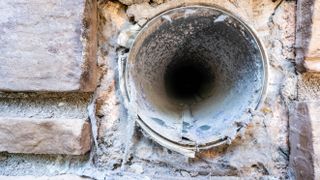
Winter is often the time when we put our clothes dryers to work. But when was the last time you cleaned your dryer vent? Just like most appliances, we need to maintain your dryer, or else it will clog up with lint. Typically, if you have a vented clothes dryer, a vent will run from the back of the appliance to the outside. This carries the moisture that has been evaporated during the cycle and vents it from your home.
Lint build-up can easily clog your vent, and trap excess moisture — creating the perfect conditions for mold growth. What’s more, lint build-up blockages could make it a serious fire hazard. The heat within the vent can cause the lint to combust, so it’s essential that you inspect and clean this area regularly.
Ensure to regularly clean out your lint trap between dryer cycles and regularly deep clean the vent. In fact not cleaning the vent is one of the common clothes dryer mistakes to avoid at all costs.
We recommend cleaning your vent twice a year for guidance — here’s how to clean a dryer vent for step-by-step instructions. Plus, check out one of these best clothes dryers if you're looking to upgrade. You may also be interested in how to dry your clothes indoors without a clothes dryer.
5. Hanging damp laundry indoors without ventilation
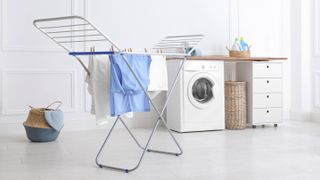
If you don’t have a clothes dryer however, we’re left with no choice but to hang our laundry indoors during winter. But as damp clothes dry, this expels moisture into the air that condenses on cold surfaces in the home. This excess moisture can lead to mold growth, especially if there is not enough air circulation.
As cold as it may be outside, make sure there’s adequate ventilation, by cracking a window or door open to allow air through. Or you can move your clothes horse to a well-ventilated room with one of the best dehumidifiers or moisture catchers to eliminate condensation.
More from Tom's Guide

As the Homes Content Editor, Cynthia Lawrence covers all things homes, interior decorating, and garden-related. She has a wealth of editorial experience testing the latest, ‘must-have’ home appliances, writing buying guides and the handy ‘how to’ features.
Her work has been published in various titles including, T3, Top Ten Reviews, Ideal Home, Real Homes, Livingetc. and House Beautiful, amongst many.
With a rather unhealthy obsession for all things homes and interiors, she also has an interior design blog for style inspiration and savvy storage solutions (get rid of that clutter!). When she’s not testing cool products, she’ll be searching online for more decor ideas to spruce up her family home or looking for a great bargain!
Most Popular
